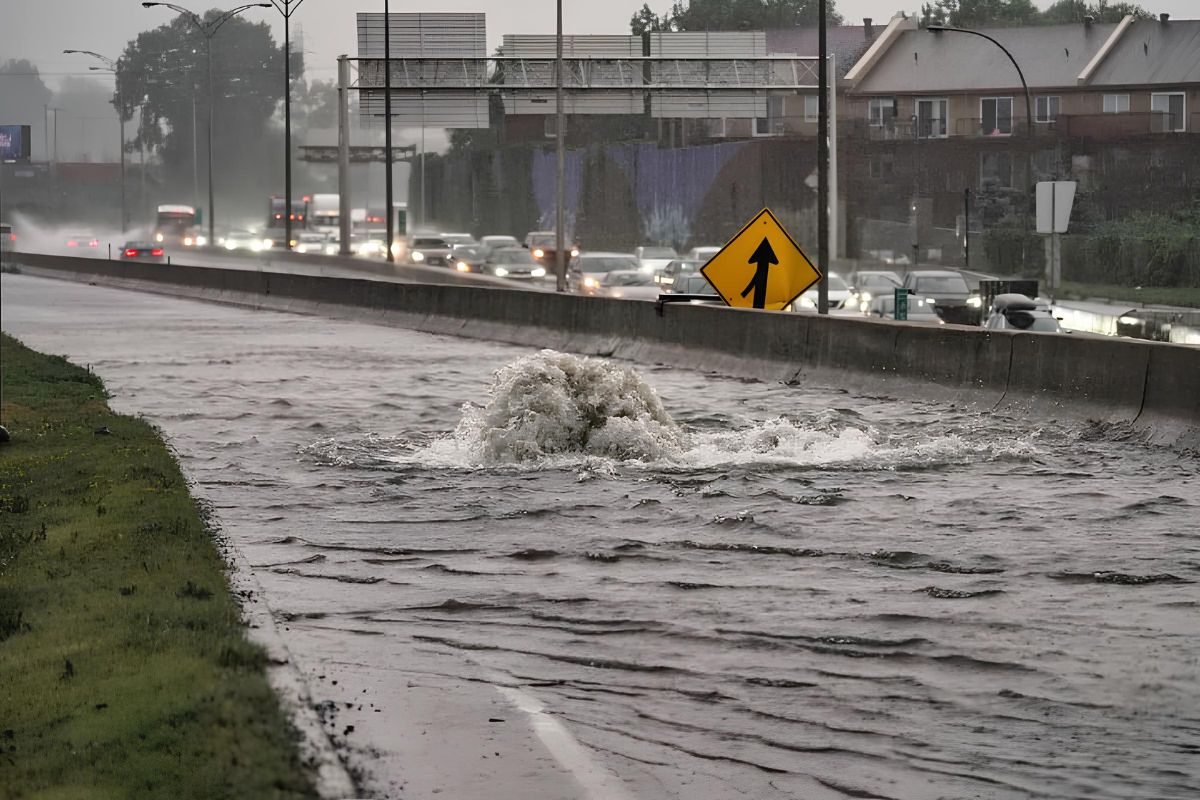
Inondation Montréal is a topic that often sparks curiosity. Flooding in this vibrant city has shaped its history, landscape, and even its culture. But what exactly causes these floods? Heavy rainfall, rapid snowmelt, and rising river levels are the usual suspects. Montreal's unique geography, with its rivers and low-lying areas, makes it particularly vulnerable. Floods can disrupt daily life, damage property, and even pose health risks. However, the city has taken steps to mitigate these impacts through improved infrastructure and emergency planning. Understanding the causes and effects of flooding in Montreal can help residents better prepare for future events.
The Basics of Inondation Montréal
Inondation Montréal, or Montreal flooding, has a significant impact on the city and its residents. Understanding the basics helps grasp the severity and frequency of these events.
- Montreal is an island city, surrounded by the St. Lawrence River and several smaller rivers, making it prone to flooding.
- The city experiences major flooding events roughly every 20 years, with smaller floods occurring more frequently.
- Flooding in Montreal is often caused by a combination of heavy rainfall, snowmelt, and ice jams in the rivers.
- The most severe flood in recent history occurred in 2017, affecting thousands of homes and displacing many residents.
Historical Flood Events
Montreal's history is dotted with significant flood events that have shaped the city's infrastructure and emergency response strategies.
- The 1886 flood was one of the earliest recorded, causing extensive damage to the city's infrastructure.
- In 1939, a major flood led to the construction of the first significant flood control measures in Montreal.
- The 1974 flood prompted the city to develop more comprehensive flood management plans.
- The 2017 flood was declared a state of emergency, with over 4,000 homes affected and 3,000 people evacuated.
Causes and Contributing Factors
Several factors contribute to the flooding in Montreal, each playing a crucial role in the severity and frequency of these events.
- Heavy rainfall, especially during the spring, significantly increases the risk of flooding.
- Rapid snowmelt in the spring adds a large volume of water to the rivers, often leading to floods.
- Ice jams, where chunks of ice block the flow of rivers, can cause water levels to rise rapidly.
- Urbanization has reduced the natural absorption of water, increasing runoff and flood risk.
Impact on Residents and Infrastructure
Flooding in Montreal affects not only the residents but also the city's infrastructure, leading to long-term consequences.
- Floods can cause significant damage to homes, often leading to costly repairs and renovations.
- Public infrastructure, such as roads and bridges, can be severely damaged, disrupting transportation and daily life.
- Flooding can lead to power outages, affecting thousands of residents and businesses.
- The psychological impact on residents, including stress and anxiety, can be profound and long-lasting.
Flood Management and Prevention
Montreal has implemented various measures to manage and prevent flooding, aiming to protect residents and infrastructure.
- The city has developed a comprehensive flood management plan, including early warning systems and emergency response strategies.
- Flood barriers and levees have been constructed in high-risk areas to protect against rising water levels.
- Montreal has invested in improving its drainage systems to better handle heavy rainfall and runoff.
- Public awareness campaigns educate residents on how to prepare for and respond to flooding events.
Environmental and Economic Consequences
Flooding in Montreal has both environmental and economic consequences, affecting the city's ecosystem and financial stability.
- Floods can lead to soil erosion, affecting agriculture and natural habitats.
- Contaminants from flooded areas can pollute rivers and lakes, harming aquatic life.
- The economic cost of flooding is substantial, with millions of dollars spent on repairs and recovery efforts.
- Insurance premiums for flood-prone areas are often higher, adding a financial burden to residents.
Future Outlook and Climate Change
Climate change is expected to influence the frequency and severity of flooding in Montreal, necessitating adaptive measures.
- Rising global temperatures are likely to increase the intensity of rainfall and the rate of snowmelt, leading to more frequent and severe floods.
The Final Splash
Montreal's floods have shaped the city's history and landscape. From the devastating 1886 flood to the more recent 2017 deluge, these events highlight the city's resilience. Floods have influenced urban planning, emergency response, and community spirit. They remind us of nature's power and the importance of preparedness.
Understanding these floods helps us appreciate Montreal's unique challenges and triumphs. It also underscores the need for sustainable practices to mitigate future risks. As climate change continues to impact weather patterns, staying informed and proactive is crucial.
Montreal's story of floods is one of adaptation and strength. By learning from the past, we can better protect our future. So, next time you stroll along the St. Lawrence River, remember the waters that have both threatened and nurtured this vibrant city. Stay safe, stay informed, and cherish the resilience of Montreal.
Was this page helpful?
Our commitment to delivering trustworthy and engaging content is at the heart of what we do. Each fact on our site is contributed by real users like you, bringing a wealth of diverse insights and information. To ensure the highest standards of accuracy and reliability, our dedicated editors meticulously review each submission. This process guarantees that the facts we share are not only fascinating but also credible. Trust in our commitment to quality and authenticity as you explore and learn with us.
